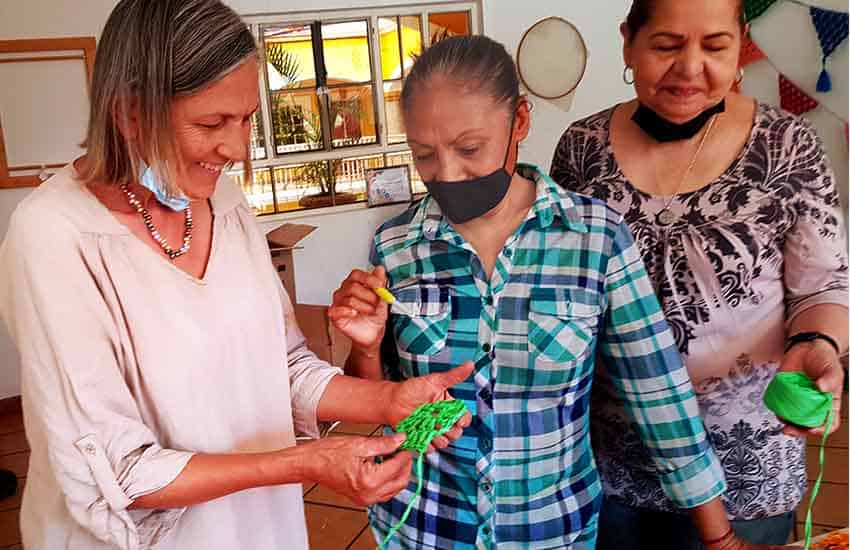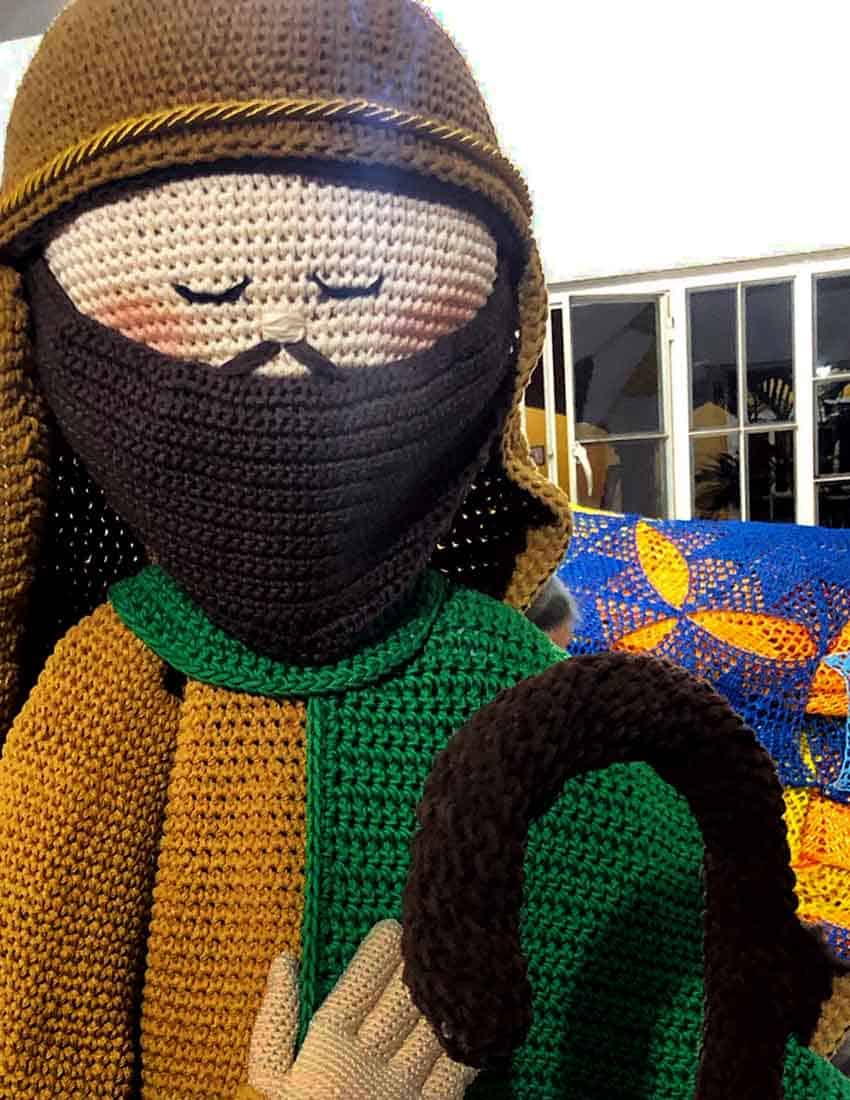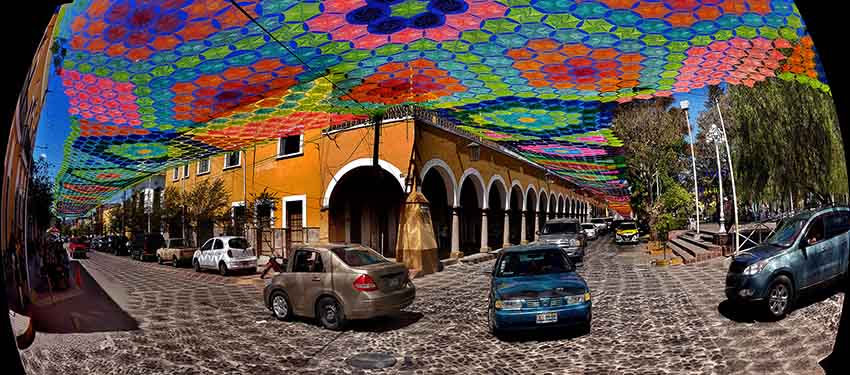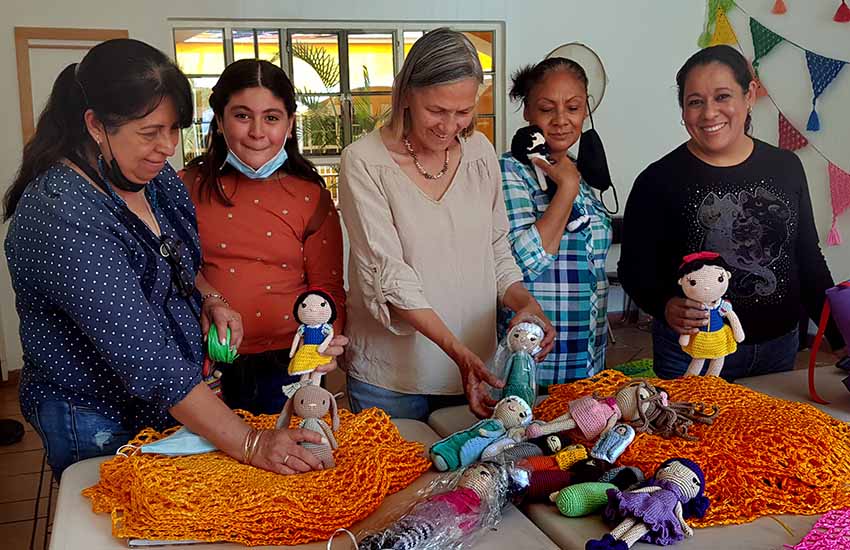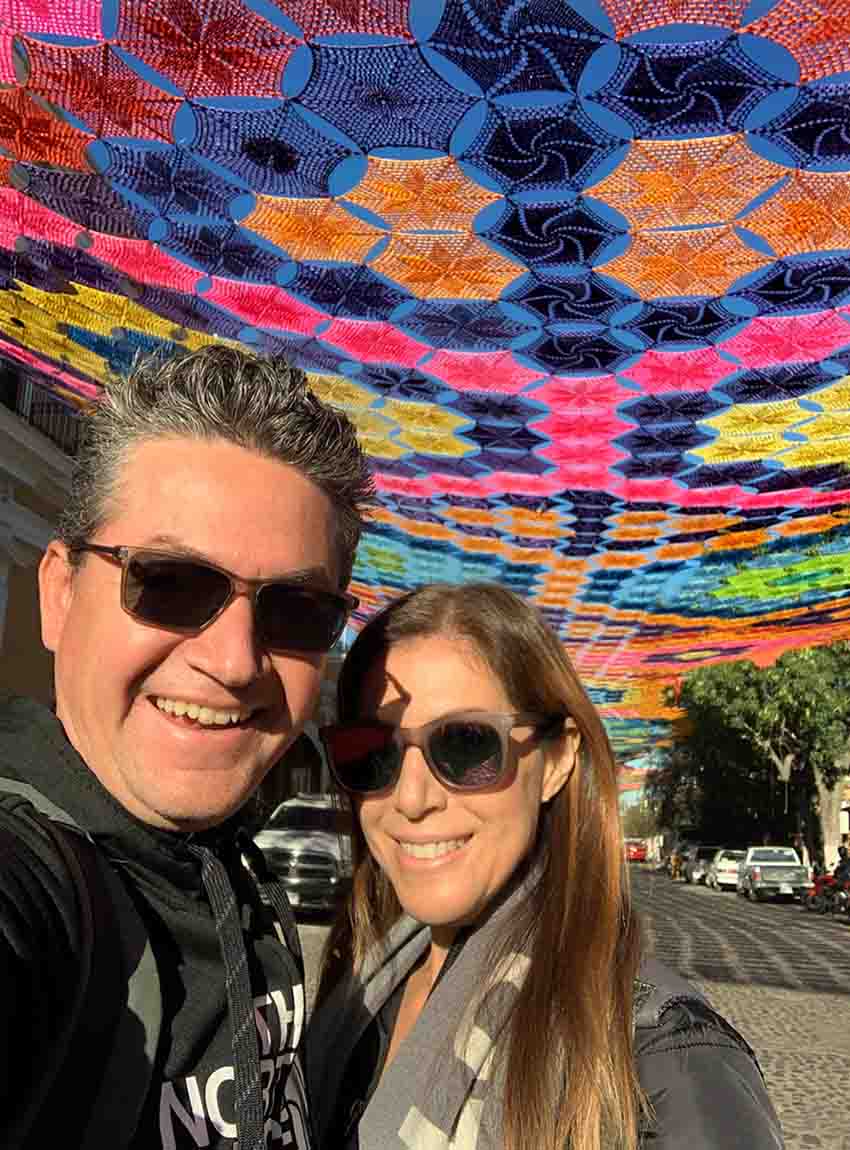A few years ago, the town of Etzatlán, Jalisco, population 20,000, was mainly known as the gateway to the fabulous silver and gold mines of Amparo, which were once among the most prosperous in Mexico.
Today, search for Etzatlán on the web and you will be dazzled by countless photos of colorful tapestries accompanied by accolades from all over the world. Yes, now the name of Etzatlán is known even in swank Dubai, 14,000 kilometers away at the World Expo in that host country, currently happening until the end of March.
This change came about due to the vision and resolve of two women of Etzatlán: veterinarian Lorena Ron and her 90-year-old mother, Paloma.
I asked Ron to explain Etzatlán’s new image.
“Even though I’m a vet by profession, I’m now dedicating all my time to our craftswomen’s workshop, which we call Cielo Tejido (Woven Sky). Our story began in 2015 when we — the ladies of Etzatlán — wanted to do something special for the feast of our patron saint, which we celebrate in the last week of October.
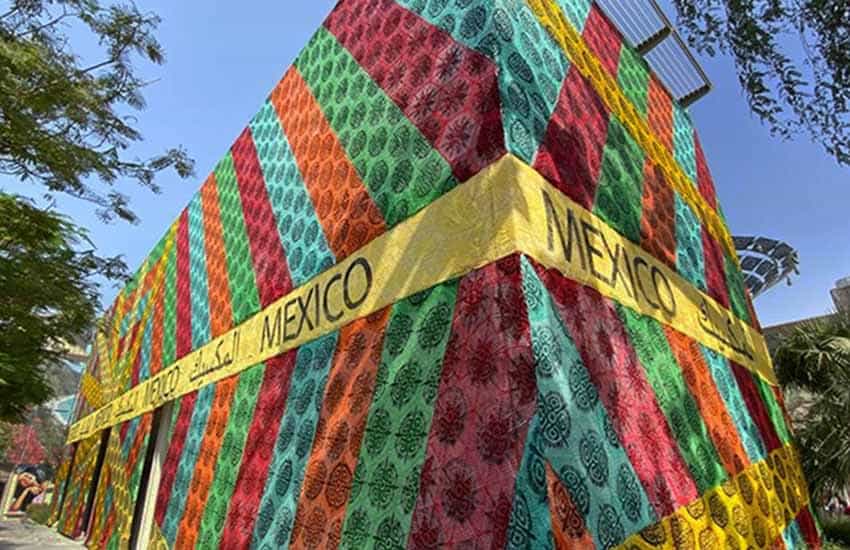
“At first, we experimented with decorating the trees in the center of town, but then we saw pictures of a street in Tlaquepaque where they had created a canopy of umbrellas suspended in the air. This got us thinking,” Ron said. “Because all of us had long ago been turned on to crocheting thanks to my mother, María Concepción, whom we all call Paloma, we decided to crochet a canopy of circles made out of rafia — not the traditional kind of rafia but synthetic rafia made from recycled plastic bottles, because we wanted it to hold up in the worst kind of weather.
“Well, our first attempts failed because our canopy was sagging in places. It wasn’t smooth and tight. Then one of my brothers said, ’Try using hexagons instead,’ which we did, and after that, we got just the look we wanted.”
Once the mayor saw what they had in mind, he offered to give the ladies support, and the project was launched.
Soon, the number of women participating expanded to 200, while the size of the canopy grew bigger and bigger — until in 2019, it had reached nearly 3,000 square meters.
At this point, it occurred to the townspeople that this might be a record for a pabellón, as they call this sort of festive street canopy. When they investigated with Guinness World Records, they found that there was a category for crochet blankets but not for an overhead canopy covering city streets.
Eventually, Guinness decided that such a category needed to be created and officially declared that the world’s largest crochet canopy, measuring 2,832.98 square meters, “was achieved by María Concepción Siordia Godínez (Mexico) in Municipio Etzatlán, Jalisco, Mexico, on October 4, 2019.”

It took 200 crocheting women nearly 25,000 hours to turn 825 kilograms of rafia into more than 8,000 hexagons.
According to the magazine México Desconocido, this achievement brought to 18 the number of world records achieved in the state of Jalisco.
It was because of this recognition by Guinness, says Lorena Ron, that Mexican artist Betsabeé Romero thought of the artisans of Etzatlán when she was asked to decorate the Mexican pavilion for Expo 2020 in Dubai (it was postponed in 2020 due to COVID-19, but the name was kept this year for branding purposes).
“I want those ladies on my team!” Romero is reported to have said.
Ron was taken by surprise. “When Betsabeé called me, I thought it was una broma, a joke. How could I believe that somebody in Dubai wanted to hire us? Nevertheless, when I hung up, I told my children: ‘Quick, go check the internet to see if this Betsabeé Romero actually exists. And they said, ‘Yes, she’s real. She’s a visual artist and a sculptor.’”
When Romero called back, she and Ron worked out a plan by which the entire Mexican pavilion building in Dubai would be wrapped in a crochet canopy from Etzatlán, which would represent “Mexican mothers hugging their country.”
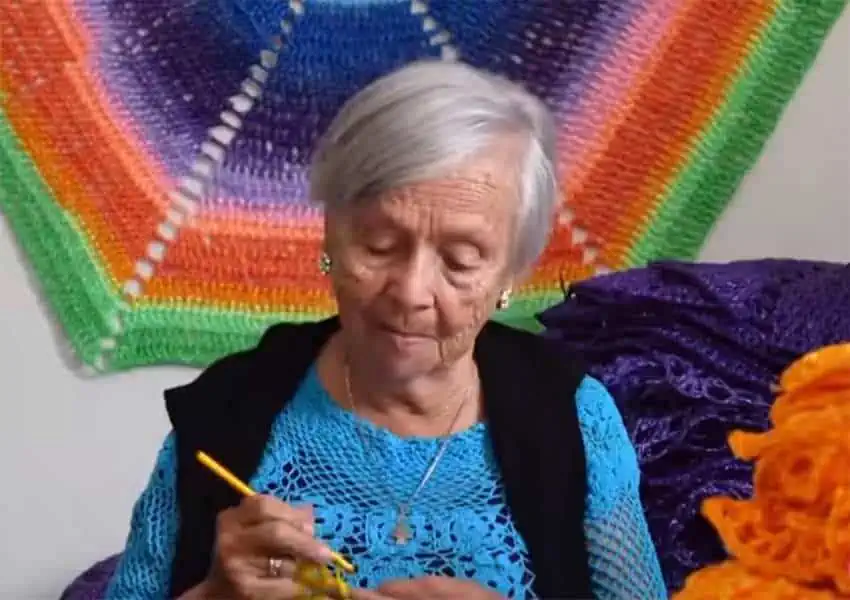
After successfully completing their project in the United Arab Emirates, the ladies of Etzatlán gave themselves a new challenge.
“This year,” says Ron, “We’ve made a pabellón three times larger than the last one. All told, we’ve crocheted 24,000 hexagons! People ask how we’re able to do it, and I tell them, ‘Our assembly line is made up of women’s hands.’”
The new canopy had originally been scheduled for last October, but the project had to be postponed due to COVID until Carnival time, which began February 25 and ended on March 1.
“And here we are, working extra hours to finish it,” Ron told me in the weeks before Carnival with a laugh.
I asked Ron about her mother, Paloma, who was given credit for the original Woven Sky canopy by Guinness World Records.
“The main actor in this show really is my mother, who is 90 years old. Right from the beginning, she has been the inspiration behind all of us. She has a kind of magnetism that brings people together,” Ron said. “She loves to crochet, but after a while, we told her, ‘Mamá, thank you for all these scarves you’ve been knitting for us, but now each of us has got plenty of them, and we think you should try something else.’
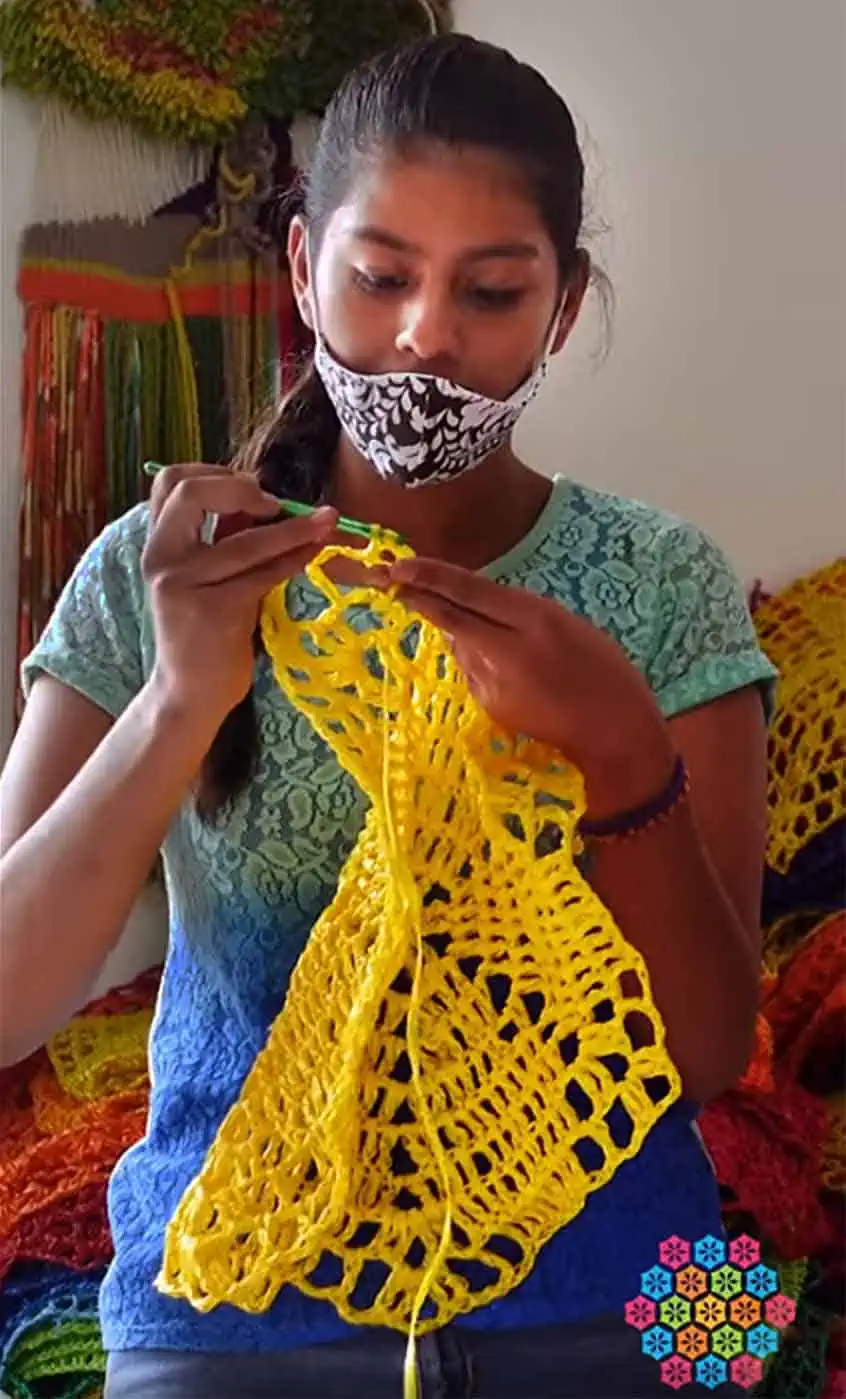
“Now, she had lost her husband and I had lost mine, and we said, ‘Let’s put all our energy into a new project, into decorating our streets!’ And so she started the whole thing, and it was a way of relieving stress, of turning her sadness into something beautiful.”
Appearing in the Guinness World Records book has opened new doors for the Etzatlán craftswomen.
“Suddenly we are getting new work,” says Ron, “and we are even giving workshops, for example, on how to make dolls. We have our own Facebook and Instagram pages called Cielo Tejido A.C. So, having finished the canopy, most of us are working on dolls and place mats, among other things. For example, we just got an order for 500 individual place mats for a wedding.“
The new Cielo Tejido canopy for Carnival, which was successfully finished on time, will stay up until the end of March.
If you go see it, you may also want to visit Etzatlán’s excellent museum, located in the Casa de Cultura. Among its treasures is a first-class representation of a burial found in a 16-meter-deep shaft tomb.
Etzatlán is a one-hour drive from Guadalajara and two hours from Lake Chapala. It is also only half an hour beyond Teuchitlán, home of the Guachimontones circular pyramids, which you might want to visit on your way to or from your stroll beneath Etzatlán’s extraordinary Woven Sky canopy.
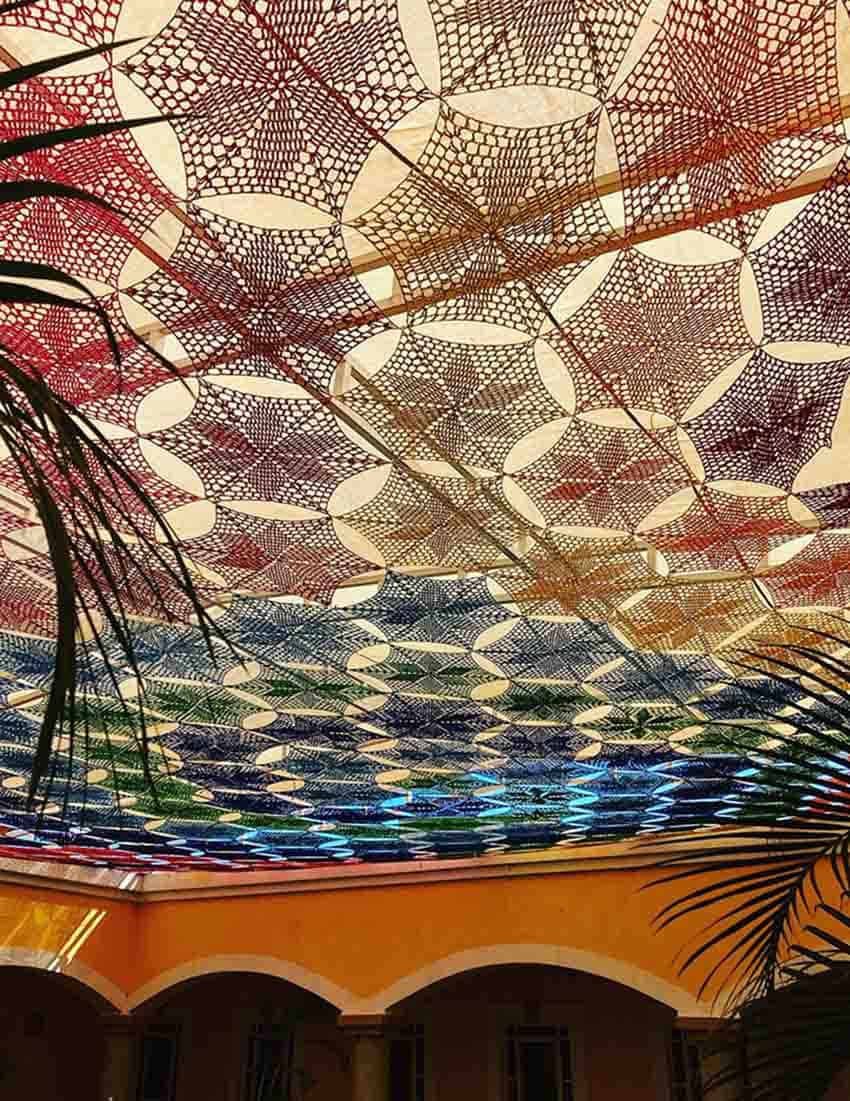
The writer has lived near Guadalajara, Jalisco, since 1985. His most recent book is Outdoors in Western Mexico, Volume Three. More of his writing can be found on his blog.
